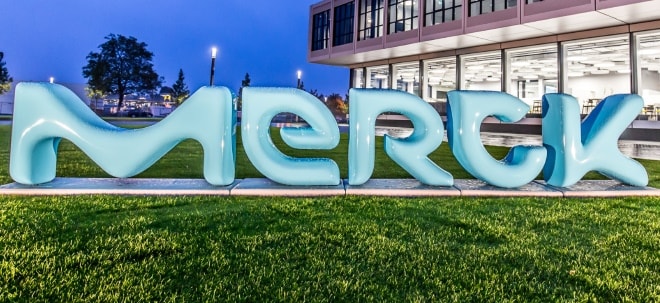Duchenne Muscular Dystrophy Therapeutics Market Surges Toward $6.6B by 2033 as Gene and RNA Therapies Redefine Treatment Paradigm | by DataM Intelligence
AUSTIN, Texas and TOKYO, Oct. 17, 2025 /PRNewswire/ -- The GlobalDuchenne Muscular Dystrophy (DMD) Therapeutics Market Size was valued at US $2.19 billion in 2024, it is projected to surge to US $6.64 billion by 2033, expanding at a CAGR of 13.2% during 2025–2033. This remarkable trajectory reflects a paradigm shift in muscular dystrophy management-from symptomatic relief to advanced genetic and molecular solutions capable of altering disease progression.

Download PDF Brochure: https://www.datamintelligence.com/download-sample/global-dunche-muscular-dystrophy-therapeutics-market
Browse in-depth TOC on "Duchenne Muscular Dystrophy Therapeutics Market"
70 – Tables
66 – Figures
195 – Pages
Therapeutic Landscape: Molecular Therapies Redefine the Standard
The market's segmentation reveals a powerful trend toward precision medicine. In 2024, Molecular-Based Therapies dominated the landscape with 45.1% market share, translating to approximately US $988 million in global revenue. This segment includes exon-skipping RNA therapeutics and gene replacement therapies that directly target the underlying genetic defect.
Steroidal and NSAID therapies-once the standard of care-collectively accounted for the remaining US $1.2 billion in 2024 but are gradually losing share to disease-modifying molecular solutions. Decision-makers within pharmaceutical R&D pipelines are already reallocating capital toward next-generation RNA platforms and gene-delivery systems that demonstrate higher efficacy and improved safety profiles.
Mutation Type Evolution: Expanding Beyond Traditional Targets
Therapies focused on Exon 51 and Exon 53 Skipping currently dominate the mutation-specific space, accounting for the majority of targeted DMD interventions. However, emerging innovations in Exon 45 Skipping and other next-wave mutation segments are expanding the treatable patient base, reducing the genetic exclusion that has historically limited therapy reach.
Companies advancing mutation-agnostic solutions-such as microdystrophin gene therapies-are strategically positioned to command larger market share over the next five years as regulatory approvals broaden.
Route of Administration: Intravenous Dominance with Subcutaneous Potential
In 2024, intravenous delivery remained the preferred route, representing 46.1% of total market value (approximately US $1.01 billion). The route's dominance reflects the infusion-based nature of existing gene and RNA therapeutics. However, pharmaceutical innovators are actively investing in subcutaneous delivery systems, expected to enhance patient convenience, expand treatment reach, and shift up to 10–15% of share toward outpatient and home-based care models by the end of the decade.
Distribution Channels: Hospital Pharmacies Lead the Charge
Hospital pharmacies captured the largest distribution share in 2024-estimated between 60%–70%-given the clinical oversight required for infusion-based treatments. Specialty pharmacies, meanwhile, are fast gaining traction as the market transitions toward home-based therapy models and chronic disease management platforms. For executives in healthcare logistics and hospital networks, this shift represents a major opportunity for partnership and operational expansion.
Request for Customized Sample Report as per Your Business Requirement: https://www.datamintelligence.com/customize/global-dunche-muscular-dystrophy-therapeutics-market
Regional Overview:
United States Market Performance
The U.S. continues to anchor the global DMD therapeutics industry, contributing the lion's share of the 43.5% North American market share-approximately US $950 million in 2024. The country's robust orphan drug framework, active gene therapy pipeline, and strong reimbursement models continue to attract global investment.
However, recent regulatory headwinds underscore the need for careful strategic planning. The U.S. Food and Drug Administration (FDA) recently intensified safety oversight following patient safety incidents linked to high-dose gene therapies. Despite these temporary setbacks, Sarepta Therapeutics' Elevidys, alongside expanded approvals for Exondys 51, continues to drive revenue growth in the region.
Sarepta reported US $1.79 billion in net product revenue in 2024, with Elevidys contributing approximately US $820.8 million. While regulatory scrutiny has affected short-term sentiment, long-term confidence remains high as new-generation gene delivery platforms aim to mitigate safety risks and restore momentum.
Japan Market Outlook
Japan remains a rising player within the Asia-Pacific region, which is forecast to grow at a CAGR of 8.1% over the next decade. In 2024, Japan's DMD therapeutics market is estimated between US $70–175 million, supported by a strong national commitment to orphan drug reimbursement and cutting-edge biotech collaborations.
Domestic leaders such as Nippon Shinyaku (NS Pharma) continue to strengthen their market footprint with Viltepso, while Japan's favorable reimbursement system encourages adoption of high-cost rare disease treatments. Recent expansions in government-backed genetic therapy trials have further positioned Japan as a crucial hub for innovation and clinical development in Asia.
Key Growth Drivers for Investors and Executives
These drivers collectively present an attractive environment for long-term capital investment and portfolio diversification in rare disease therapeutics.
Challenges Ahead
The market's momentum is tempered by notable challenges. High per-patient costs (often exceeding US $1 million per treatment), manufacturing scalability, and regulatory complexity remain key barriers. Safety concerns associated with viral vector-based therapies continue to test investor confidence. Nevertheless, the long-term potential for durable, one-time treatments outweighs the short-term volatility.
Competitive Landscape: The Power Players
- Sarepta Therapeutics - Market leader with US $1.79 billion in 2024 product revenue; expanding beyond exon-skipping into microdystrophin gene therapy.
- PTC Therapeutics - Reported US $814 million in total 2024 revenue; flagship products Translarna and Emflaza generated over US $547 million combined.
- Catalyst Pharmaceuticals - Achieved record US $491.7 million revenue in 2024, leveraging rare disease expertise to expand into DMD.
- Nippon Shinyaku (NS Pharma) - Strengthening global presence with Viltepso; a cornerstone of Japan's rare disease portfolio.
- ITF Therapeutics - An emerging developer investing in early-stage DMD R&D programs and clinical collaborations across Europe.
Buy This Exclusive Report at Just USD 4350 Only: https://www.datamintelligence.com/buy-now-page?report=global-dunche-muscular-dystrophy-therapeutics-market
Strategic Outlook: From Research to Revenue
The next decade will define the commercial trajectory of DMD therapeutics. Executives evaluating entry or expansion in this market should view it as a high-risk, high-return frontier-where innovation cycles are short, capital requirements high, but value creation unparalleled. The convergence of genetic engineering, regulatory momentum, and targeted funding will not just transform patient outcomes but also reshape the rare disease business model itself.
As the market ascends toward US $6.64 billion by 2033, those who align early with gene therapy platforms, scalable delivery systems, and precision diagnostic ecosystems will be best positioned to capture the next era of growth in the global DMD therapeutics landscape.
Related Report:
About DataM Intelligence
DataM Intelligence is a renowned provider of market research, delivering deep insights through pricing analysis, market share breakdowns, and competitive intelligence. The company specializes in strategic reports that guide businesses in high-growth sectors such as nutraceuticals and AI-driven health innovations.
To find out more, visit https://www.datamintelligence.com/ or follow us on Twitter, LinkedIn and Facebook.
Contact:
Sai Kiran
DataM Intelligence 4market Research LLP
Ground floor, DSL Abacus IT Park, Industrial Development Area
Uppal, Hyderabad, Telangana 500039
USA: +1 877-441-4866
Email: Sai.k@datamintelligence.com
Logo: https://mma.prnewswire.com/media/1858619/3573087/DataM_Intelligence_Logo.jpg
SOURCE DataM Intelligence 4 Market Research LLP

